Right person
With Insider, you can segment your audience into targeted buckets with:
- User clustering and advanced segmentation capabilities
- AI Predictive Segments (such as likelihood to purchase and likelihood to churn)

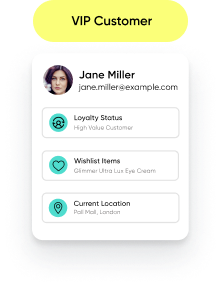
Data is the fuel for success
Dozens of engineers in team-branded racing overalls race from garage to pit lane, ready to replace a worn tire or tweak a faulty front wing in two seconds flat.
A few meters away on the pit wall, the team principal and his strategists analyze millions of data points across multiple computer monitors, trying to outsmart the competition and secure that coveted podium finish.
In back offices worldwide, data engineers pore over cloud insights, running simulation after simulation to determine the best racing strategy to deploy to win the race.
On the track, racing drivers work hard to flag balance, brakes, or tire issues to make real-time adjustments and improve their car’s performance.
sensors
data points
of data
different racing simulations
The stakes are high, the competition is fierce, and one tiny tweak can often make all the difference.
Welcome to an average weekend in Formula 1.
In Formula 1, the margin between winning and losing is razor-thin. In the 1971 Italian GP, Peter Gethin pipped Ronnie Peterson to first place by a mere 0.010 seconds—the closest race in Formula 1 in history.
And it isn’t just guesswork and a commitment to driving fast that wins races; each Formula 1 car emits more than one million data points per second which teams must analyze and act upon in the hopes of shaving mere milliseconds off their latest lap times.
Formula 1 cars have more than 300 sensors measuring everything from tire pressure and wind speed to air pressure and temperature. Even the driver’s gloves contain tiny sensors sewn directly into the fabric, which detect heart rate and blood oxygen level. And this vast pool of data—often up to 1.5 terabytes of it over a race weekend—enables teams to generate more than one billion different racing simulations during a single race.
So while racing cars may run on gas, the real fuel for Formula 1 success is data.
Sign up to the series to be the first in line for new content when it drops!
Formula 1 remains one of the best examples of how prioritizing a data-driven environment impacts results. Teams collect and analyze data from on-car sensors, wind tunnel testing, driver telemetry, and more to gain insights into car performance, track conditions, and driver behavior. They then use this data to make real-time decisions about car setup, pit stops, and race strategy.
And this is a huge lesson for marketers, too. Because, like Formula 1 teams, marketers must be able to collect and visualize their customer data to make good decisions—on marketing strategy, key personas, relevant messaging, and audience segmentation.
Ultimately, it’s the teams that can best harness the power of data that win championships.
So it’s little surprise that the most successful consumer brands worldwide are data-driven, too. Just take the examples of Amazon and Netflix.

Amazon, the world's largest online retailer, is well-known for its sophisticated and data-driven approach to marketing. With vast amounts of customer data collected daily (including purchase history, browsing behavior, and search queries), Amazon personalizes the online shopping experience—making product recommendations based on past purchases, for example, or tailoring marketing messages based on interests.

Netflix, the popular streaming service, analyzes viewing history and engagement with specific genres, actors, and directors to recommend shows and movies likely to appeal to individual users. They also use data to help guide their content strategy, analyzing viewing trends and user feedback to determine which types of content are likely to be successful and worth investing in.



Amazon, the world’s largest online retailer, is well-known for its sophisticated and data-driven approach to marketing. With vast amounts of customer data collected daily (including purchase history, browsing behavior, and search queries), Amazon personalizes the online shopping experience—making product recommendations based on past purchases, for example, or tailoring marketing messages based on interests.

Netflix, the popular streaming service, analyzes viewing history and engagement with specific genres, actors, and directors to recommend shows and movies likely to appeal to individual users. They also use data to help guide their content strategy, analyzing viewing trends and user feedback to determine which types of content are likely to be successful and worth investing in.
Both Amazon and Netflix have leveraged vast amounts of customer data to personalize the customer experience, optimize their operations, and develop successful marketing and content strategies. By being entirely data-driven, these brands have made themselves household names and withstood the test of time.
For brands looking to emulate the success of Netflix and Amazon, ensuring a 360-degree view of customer data is the first step. But how can you do this if your data is held across dozens—even hundreds—of different martech systems?
The result? Confusion and inefficiency. So if your martech stack looks slightly complicated right now, you’re not alone. However…
to be the best, you have to beat the best
…And that means investing in the right technology which can join up disparate data and give you a centralized view of your customers. You wouldn’t expect to see Red Bull Racing Team Principal Christian Horner scrabbling around multiple systems on race day looking for the right data. And so why should you?

Common warning signs of data silos in your organization (according to Segment)
Team members repeat the same question, indicating they don’t have access to the data they need.
Departments blame other teams when problems arise, indicating they may be working from different data sets, leading them to different conclusions and strategies.
You do not see any ROI from your data collection tools, indicating you haven’t implemented a truly data-based strategy yet.

Effective marketing is simple: you need to communicate the right message, to the right user, at the right time, on the right channel. Yet, while the motto may be simple, actioning it is often the hard part for marketers.
With the growing number of touchpoints customers have with brands—such as your website, social media, email, and in-store interactions—it’s crucial for marketers to collect, consolidate, and analyze this data in a centralized location to make data-driven decisions.
“A Customer Data Platform (CDP) is a piece of software that combines data from multiple tools to create a single centralized customer database containing data on all touch points and interactions with your product or service. That database can then be segmented in a nearly endless number of ways to create more personalized marketing campaigns.” (Source: Segment)

Download The Complete Guide to Customer Data Platforms to find out more.
And to ensure a podium finish on your next marketing campaign, the importance of CDPs cannot be underestimated. Because, much like the importance of the cloud for building winning race strategies in Formula 1, CDPs are the necessary backbone for marketers to deliver relevant, timely, and high-value marketing campaigns.

Insider’s customer data platform in action
Insider’s CDP enables marketers to orchestrate cross-channel marketing efforts effectively, creating a seamless customer experience across multiple touchpoints. By unifying all customer data in one centralized platform, marketers can identify which channels are most effective for reaching their target audience—then optimize their marketing budget accordingly.
With Insider, you can segment your audience into targeted buckets with:
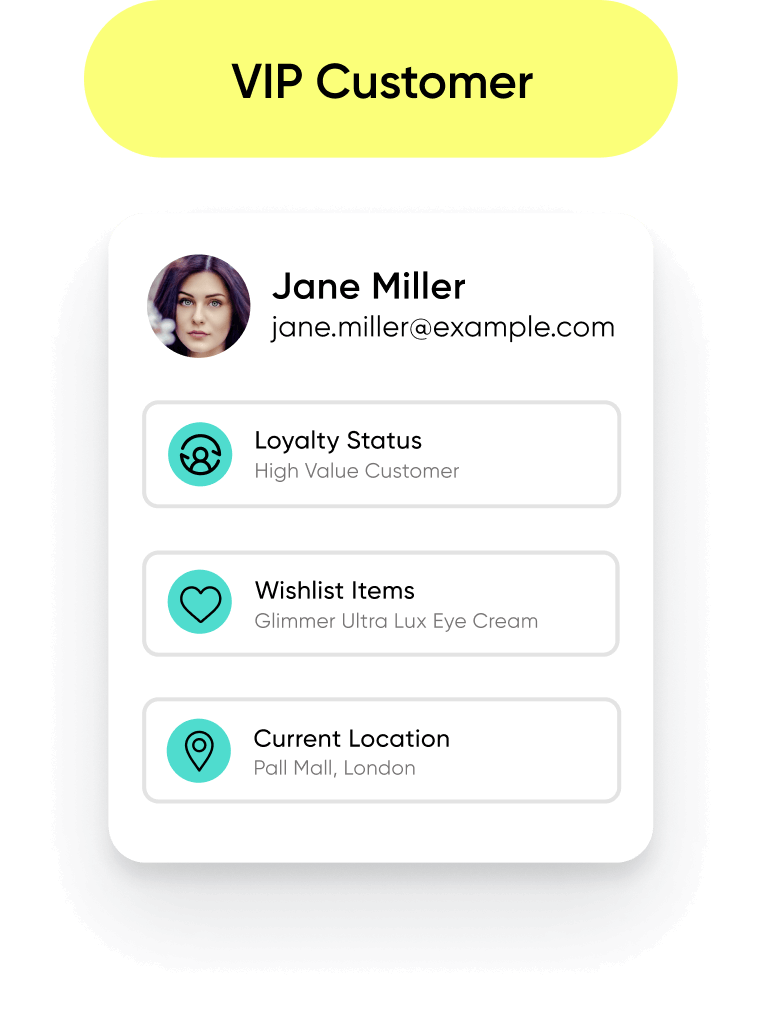
Insider empowers marketers to tailor campaign messaging based on a user’s:
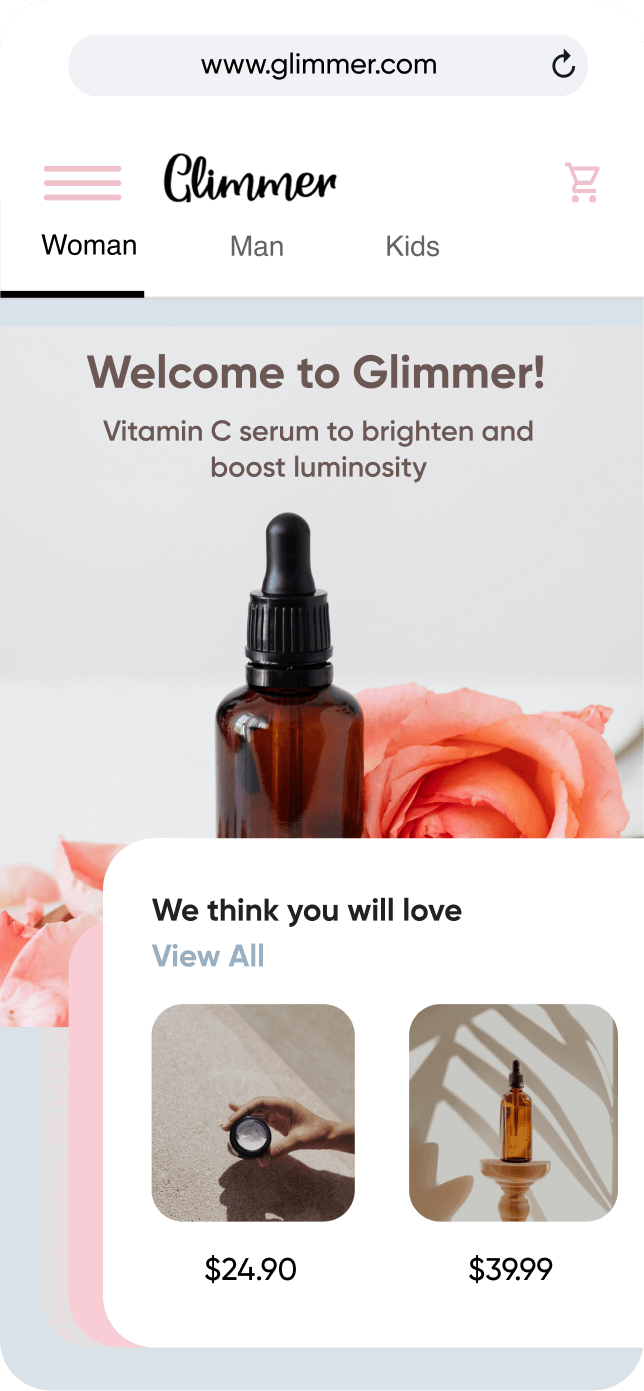
You can reach your audience at the right time based on a user’s:

And reach them on the channels they spend the most time with Insider’s:

With Insider, you can segment your audience into targeted buckets with:



Insider empowers marketers to tailor campaign messaging based on a user’s:


And reach them on the channels they spend the most time with Insider’s:


You can reach your audience at the right time based on a user’s:


But don’t just take our word for it…
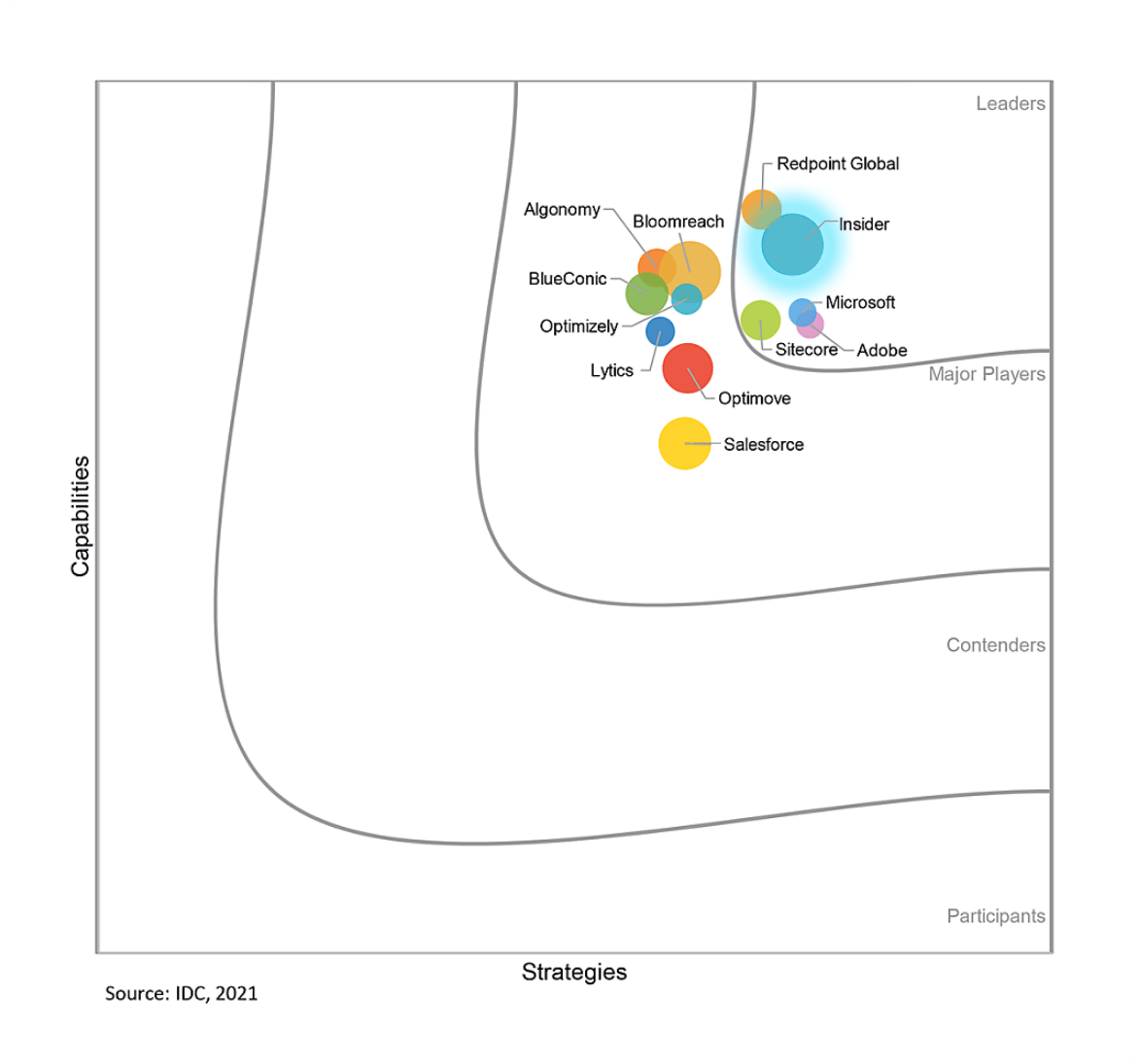
“Insider is a robust yet intuitive platform that helps marketers achieve a 360-degree customer view and powers customer journey analytics, orchestration, and personalization.” (Source: IDC)



And so who is our Race 1 winner? What innovative brand has prioritized making data the fuel for success to achieve incredible results? Let’s find out…



Phenomenal growth requires a tech stack that can keep up
As one of Europe’s top 20 fastest growing brands, NA-KD was growing at a rapid rate—but their tech stack needed to keep up with their growth rate.
With their iOS and Android app launches on a speedy track, NA-KD integrated with Insider to ensure they weren’t using single point solutions and causing their customer data to be locked in silos. NA-KD needed a technology partner to help them unlock the full potential of their data. One that would help them gain a unified view of each customer and create individualized experiences across all their marketing channels.
Discover NA-KD’s story by watching the video below

Connecting data for a 360-degree view of the customer
Using Insider’s CDP, NA-KD consolidated its tech stack into a single unified solution to achieve a 360-degree view of every customer.
With Insider, NA-KD was able to redefine its marketing strategy, ditching traditional campaigns and coupon-based marketing to create individualized experiences as unique as its customers.
To win race 1, marketers need a customer data platform to
collect and analyze data—efficiently, quickly, and at scale.
Customer Data Platforms (CDPs) are becoming increasingly important for marketers to collect, consolidate, and analyze customer data in a centralized location.
Insider’s CDP allows marketers to orchestrate cross-channel marketing efforts, create a seamless customer experience, and identify the most effective channels. NA-KD, one of Europe’s fastest-growing brands, consolidated its tech stack using Insider’s CDP, achieving a 360-degree view of every customer and creating individualized experiences.
Wanna see a CDP in action?
Take a look at our interactive tool; select the data sources you want to plug in, then get recommendations on high-performing use cases you can put into action immediately.
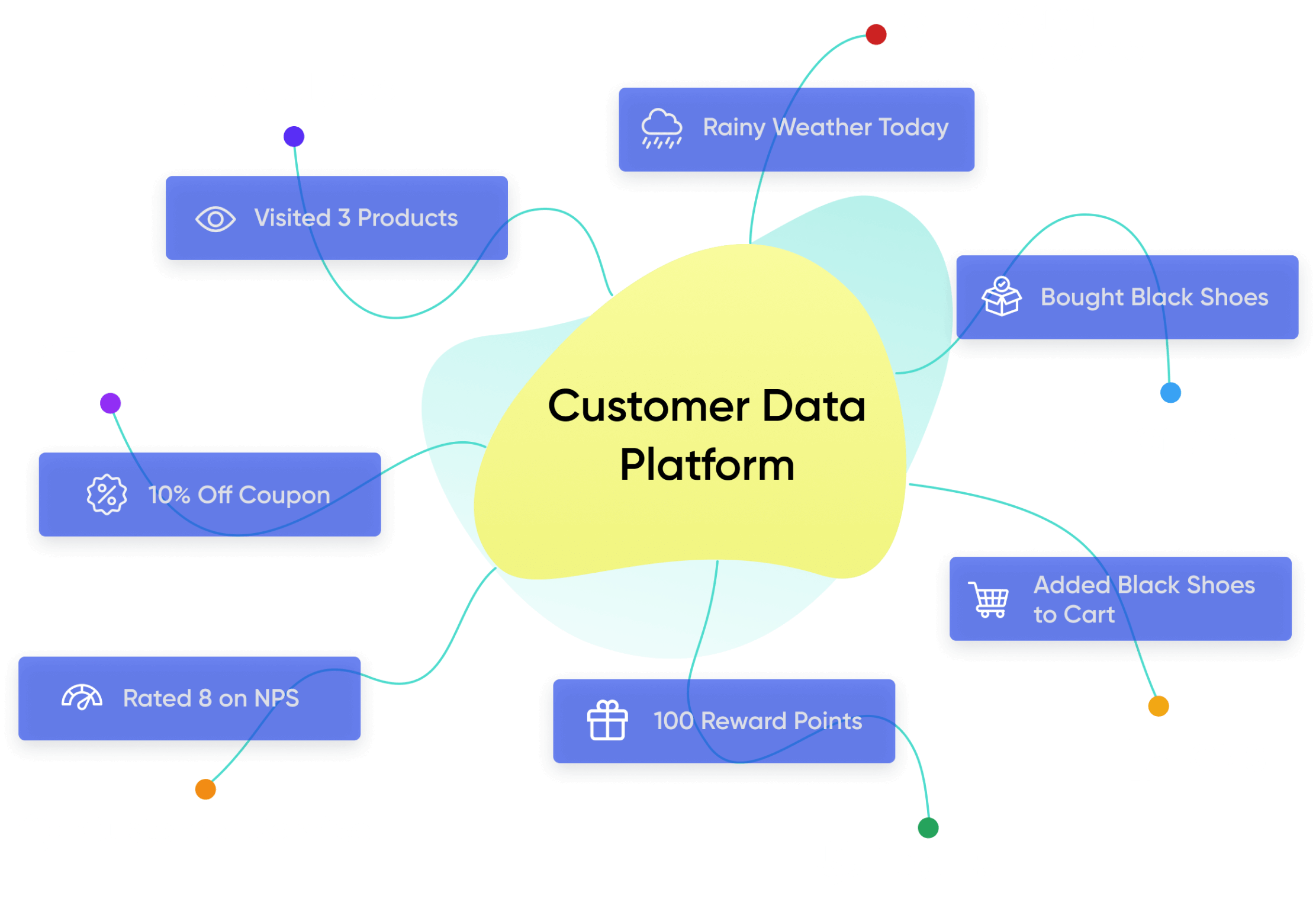



Sign up for our Formula 1 series to be alerted of new content as soon as it drops! Race 2 will be heading your way soon…
| Cookie | Duration | Description |
|---|---|---|
| __cf_bm | 1 hour | This cookie, set by Cloudflare, is used to support Cloudflare Bot Management. |
| __Secure-ENID | 1 year 1 month | The __Secure-ENID cookie is a type of secure cookie used for authentication and to ensure the security of user sessions. |
| _cfuvid | session | Cloudflare sets this cookie to track users across sessions to optimize user experience by maintaining session consistency and providing personalized services |
| _GRECAPTCHA | 6 months | Google Recaptcha service sets this cookie to identify bots to protect the website against malicious spam attacks. |
| _shopify_essential | session | Shopify sets this cookie, which contains essential information required for the proper functioning of a store, such as session details, checkout information and anti-tampering data. |
| AWSALBCORS | 7 days | Amazon Web Services set this cookie for load balancing. |
| connect.sid | 2 hours | This cookie is used for authentication and for secure log-in. It registers the log-in information. |
| cookielawinfo-checkbox-advertisement | 1 year | The cookie is set by GDPR cookie consent to record the user consent for the cookies in the category "Advertisement". |
| cookielawinfo-checkbox-analytics | 1 year | This cookies is set by GDPR Cookie Consent WordPress Plugin. The cookie is used to remember the user consent for the cookies under the category "Analytics". |
| cookielawinfo-checkbox-necessary | 1 year | This cookie is set by GDPR Cookie Consent plugin. The cookies is used to store the user consent for the cookies in the category "Necessary". |
| cookielawinfo-checkbox-performance | 1 year | This cookie is set by GDPR Cookie Consent plugin. The cookie is used to store the user consent for the cookies in the category "Performance". |
| datadome | session | This is a security cookie set by Force24 to detect BOTS and malicious traffic. |
| elementor | never | The website's WordPress theme uses this cookie. It allows the website owner to implement or change the website's content in real-time. |
| localization | 1 year | The localization cookie stores user preferences for language and region to provide a personalized browsing experience. |
| rc::a | never | This cookie is set by the Google recaptcha service to identify bots to protect the website against malicious spam attacks. |
| rc::b | session | This cookie is set by the Google recaptcha service to identify bots to protect the website against malicious spam attacks. |
| rc::c | session | This cookie is set by the Google recaptcha service to identify bots to protect the website against malicious spam attacks. |
| rc::f | never | This cookie is set by the Google recaptcha service to identify bots to protect the website against malicious spam attacks. |
| viewed_cookie_policy | 1 year | The GDPR Cookie Consent plugin sets the cookie to store whether or not the user has consented to use cookies. It does not store any personal data. |
| VISITOR_PRIVACY_METADATA | 6 months | YouTube sets this cookie to store the user's cookie consent state for the current domain. |
| Cookie | Duration | Description |
|---|---|---|
| __hssc | 30 minutes | This cookie is set by HubSpot. The purpose of the cookie is to keep track of sessions. This is used to determine if HubSpot should increment the session number and timestamps in the __hstc cookie. It contains the domain, viewCount (increments each pageView in a session), and session start timestamp. |
| bcookie | 11 months | This cookie is set by linkedIn. The purpose of the cookie is to enable LinkedIn functionalities on the page. |
| lang | session | This cookie is used to store the language preferences of a user to serve up content in that stored language the next time user visit the website. |
| lidc | 1 day | This cookie is set by LinkedIn and used for routing. |
| yt-remote-cast-available | session | The yt-remote-cast-available cookie is used to store the user's preferences regarding whether casting is available on their YouTube video player. |
| yt-remote-cast-installed | session | The yt-remote-cast-installed cookie is used to store the user's video player preferences using embedded YouTube video. |
| yt-remote-connected-devices | never | YouTube sets this cookie to store the user's video preferences using embedded YouTube videos. |
| yt-remote-device-id | never | YouTube sets this cookie to store the user's video preferences using embedded YouTube videos. |
| yt-remote-fast-check-period | session | The yt-remote-fast-check-period cookie is used by YouTube to store the user's video player preferences for embedded YouTube videos. |
| yt-remote-session-app | session | The yt-remote-session-app cookie is used by YouTube to store user preferences and information about the interface of the embedded YouTube video player. |
| yt-remote-session-name | session | The yt-remote-session-name cookie is used by YouTube to store the user's video player preferences using embedded YouTube video. |
| ytidb::LAST_RESULT_ENTRY_KEY | never | The cookie ytidb::LAST_RESULT_ENTRY_KEY is used by YouTube to store the last search result entry that was clicked by the user. This information is used to improve the user experience by providing more relevant search results in the future. |
| Cookie | Duration | Description |
|---|---|---|
| _gat | 1 minute | Google Universal Analytics sets this cookie to restrain request rate and thus limit data collection on high-traffic sites. |
| AWSALB | 7 days | AWSALB is an application load balancer cookie set by Amazon Web Services to map the session to the target. |
| INGRESSCOOKIE | session | This cookie is used for load balancing and session stickiness. This technical session identifier is required for some website features. |
| YSC | session | This cookies is set by Youtube and is used to track the views of embedded videos. |
| Cookie | Duration | Description |
|---|---|---|
| __hstc | 11 months | This cookie is set by Hubspot and is used for tracking visitors. It contains the domain, utk, initial timestamp (first visit), last timestamp (last visit), current timestamp (this visit), and session number (increments for each subsequent session). |
| _ga | 1 year | This cookie is installed by Google Analytics. The cookie is used to calculate visitor, session, campaign data and keep track of site usage for the site's analytics report. The cookies store information anonymously and assign a randomly generated number to identify unique visitors. |
| _ga_* | 1 year 1 month 4 days | Google Analytics sets this cookie to store and count page views. |
| _gat_UA-* | 1 minute | Google Analytics sets this cookie for user behaviour tracking. |
| _gat_UA-81205217-1 | 1 minute | This is a pattern type cookie set by Google Analytics, where the pattern element on the name contains the unique identity number of the account or website it relates to. It appears to be a variation of the _gat cookie which is used to limit the amount of data recorded by Google on high traffic volume websites. |
| _gcl_au | 3 months | This cookie is used by Google Analytics to understand user interaction with the website. |
| _gd_session | 4 hours | 6sense sets this cookie to collect information on users' visits to the website. It collects data such as the total number of visits, the average time spent on the website and the pages loaded. |
| _gd_visitor | 1 year 1 month 4 days | 6sense sets this cookie, which is used for collecting information on the user's visit, such as the number of visits, average time spent on the website and the pages loaded for displaying targeted ads. |
| _gid | 1 day | This cookie is installed by Google Analytics. The cookie is used to store information of how visitors use a website and helps in creating an analytics report of how the website is doing. The data collected including the number visitors, the source where they have come from, and the pages visted in an anonymous form. |
| _hjSession_* | 1 hour | Hotjar sets this cookie to ensure data from subsequent visits to the same site is attributed to the same user ID, which persists in the Hotjar User ID, which is unique to that site. |
| _hjSessionUser_* | 1 year | Hotjar sets this cookie to ensure data from subsequent visits to the same site is attributed to the same user ID, which persists in the Hotjar User ID, which is unique to that site. |
| _shopify_s | 1 hour | This cookie is associated with Shopify's analytics suite. |
| _shopify_y | 1 year | This cookie is associated with Shopify's analytics suite. |
| AEC | 6 months | AEC cookies are used to ensure user data remains consistent during an Analytics session. |
| hubspotutk | 11 months | This cookie is used by HubSpot to keep track of the visitors to the website. This cookie is passed to Hubspot on form submission and used when deduplicating contacts. |
| vuid | 1 year | Vimeo installs this cookie to collect tracking information by setting a unique ID to embed videos on the website. |
| Cookie | Duration | Description |
|---|---|---|
| _fbp | 3 months | This cookie is set by Facebook to deliver advertisement when they are on Facebook or a digital platform powered by Facebook advertising after visiting this website. |
| bscookie | 11 months | This cookie is a browser ID cookie set by Linked share Buttons and ad tags. |
| c | 6 months 2 days | Rubicon Project sets this cookie to control the synchronization of user identification and the exchange of user data between various ad services. |
| fr | 3 months | The cookie is set by Facebook to show relevant advertisments to the users and measure and improve the advertisements. The cookie also tracks the behavior of the user across the web on sites that have Facebook pixel or Facebook social plugin. |
| IDE | 11 months | Used by Google DoubleClick and stores information about how the user uses the website and any other advertisement before visiting the website. This is used to present users with ads that are relevant to them according to the user profile. |
| test_cookie | 15 minutes | This cookie is set by doubleclick.net. The purpose of the cookie is to determine if the user's browser supports cookies. |
| VISITOR_INFO1_LIVE | 5 months 27 days | This cookie is set by Youtube. Used to track the information of the embedded YouTube videos on a website. |
| yt.innertube::nextId | never | YouTube sets this cookie to register a unique ID to store data on what videos from YouTube the user has seen. |
| yt.innertube::requests | never | YouTube sets this cookie to register a unique ID to store data on what videos from YouTube the user has seen. |
| Cookie | Duration | Description |
|---|---|---|
| __cflb | 1 hour | This cookie is used by Cloudflare for load balancing. |
| __Secure-ROLLOUT_TOKEN | 6 months | Description is currently not available. |
| __Secure-YEC | past | Description is currently not available. |
| __Secure-YNID | 6 months | Description is currently not available. |
| __tld__ | session | Description is currently not available. |
| _an_uid | 7 days | No description available. |
| _dd_s | 1 year | No description available. |
| _w_session | 14 days | Description is currently not available. |
| _zitok | 1 year | Description is currently not available. |
| aka_edgescape | session | No description available. |
| aka_edgescape_country | session | No description available. |
| akaalb_enterprise_aws | session | Description is currently not available. |
| akaas_audseg_bobbibrowncosmetics_com | 7 days | Description is currently not available. |
| akaas_audseg_origins_com | 7 days | Description is currently not available. |
| Akamai-Edgescape | session | Description is currently not available. |
| AnalyticsSyncHistory | 1 month | No description |
| authenticity_token | session | No description available. |
| cookielawinfo-checkbox-functional | 1 year | The cookie is set by GDPR cookie consent to record the user consent for the cookies in the category "Functional". |
| cookielawinfo-checkbox-others | 1 year | No description |
| dd_anonymous_id | 1 year | Description is currently not available. |
| ins-c | 1 day | No description |
| ins-current-currency | never | No description available. |
| ins-gaSSId | never | This cookie is set by the useinsider. This cookie is used for calculating the impact of special campaigns. |
| ins-storage-version | 1 year | No description |
| insdrPushCookieStatus | 1 day | This cookie is set by the provider Insider. This cookie is used for web push recieving. |
| js_enabled | session | No description available. |
| RUL | 1 year | No description |
| UserMatchHistory | 1 month | Linkedin - Used to track visitors on multiple websites, in order to present relevant advertisement based on the visitor's preferences. |
| WMF-Uniq | 1 year | Description is currently not available. |